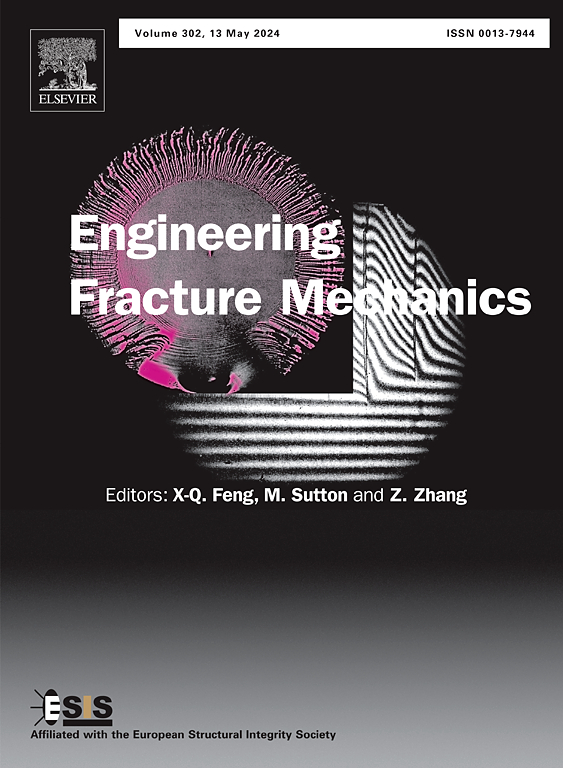Effect of fibre content on low-temperature failure strength and toughness of different sized BFRC under static and dynamic loadings: An experimental study
IF 4.7
2区 工程技术
Q1 MECHANICS
引用次数: 0
Abstract
Basalt fibres (BF) have been increasingly wide-used in many concrete structures, which also have a good application prospect in low-temperature environment. The comprehensive investigations on static/dynamic mechanical properties of Basalt Fibre-Reinforced Concrete (i.e., BFRC) have become a key scientific issue to be solved urgently. This paper aims to conduct comprehensive tests on uniaxial compressive and splitting-tensile failures of various sized BFRC (side lengths of 70 ∼ 200 mm) with various volume contents (0 ∼ 0.5 %) under static/dynamic loadings at different temperatures (20 ∼ -90 °C), with a special focus of the fibre reinforcement effect and cryogenic enhancement effect on toughness and nominal strengths as well as the corresponding size effect. Test results indicate that static/dynamic nominal strengths increase linearly with the decrease of temperature, exhibiting a significant cryogenic enhancement effect. This cryogenic effect can be enhanced by the incorporation of BF, wherein the fibre pull-out (Model-1) replaces fibre rupture (Model-2) as the dominate failure mode at low temperatures. Static/dynamic compressive toughness of BFRC is significantly improved with the adding fibre content (the incorporation of 0.5 % BF can bring a maximum increase of nearly 1.5 times), showing a fibre reinforcement effect, especially at ambient temperature. Nominal strengths decrease with the adding specimen sizes, performing a significant size effect, which is gradually strengthened with the decrease of temperature. However, both the incorporation of BF and the increasing loading strain-rate could weaken the size effect. Finally, according to test results, empirical formulas for the effective predication of nominal strengths of BFRC considering the quantitative coupling effects of fibre volume contents and temperatures have been proposed. The present research aims to provide effective references for safety design and large-scale applications of BFRC engineering structures under extreme cryogenic environments.
求助全文
约1分钟内获得全文
求助全文
来源期刊
CiteScore
8.70
自引率
13.00%
发文量
606
审稿时长
74 days
期刊介绍:
EFM covers a broad range of topics in fracture mechanics to be of interest and use to both researchers and practitioners. Contributions are welcome which address the fracture behavior of conventional engineering material systems as well as newly emerging material systems. Contributions on developments in the areas of mechanics and materials science strongly related to fracture mechanics are also welcome. Papers on fatigue are welcome if they treat the fatigue process using the methods of fracture mechanics.

 求助内容:
求助内容: 应助结果提醒方式:
应助结果提醒方式:


